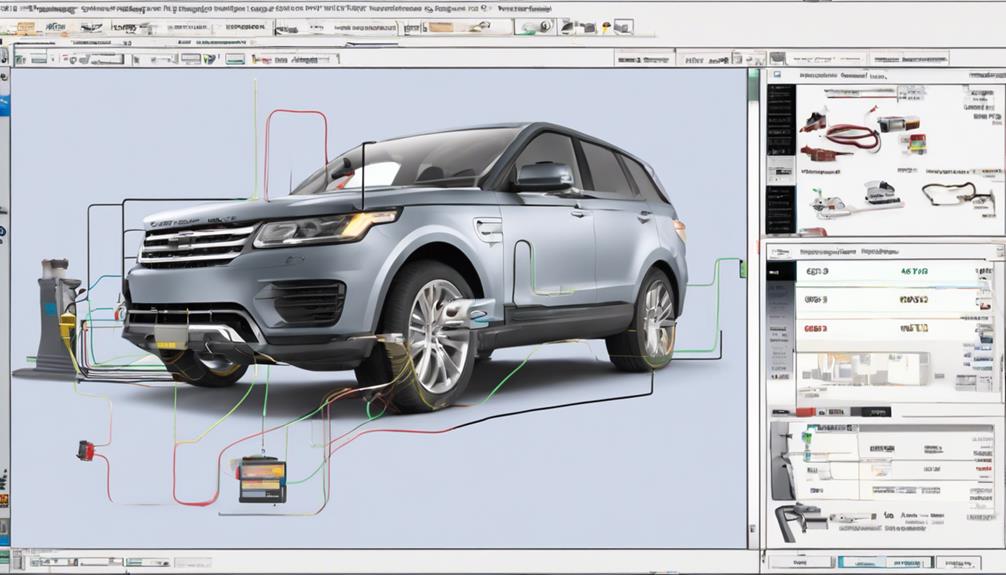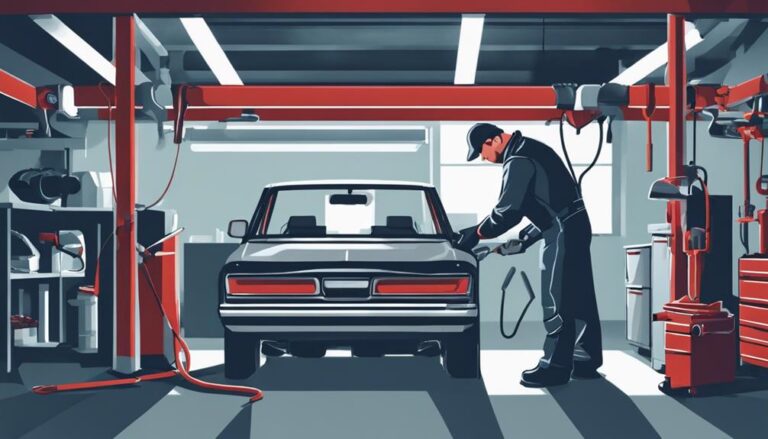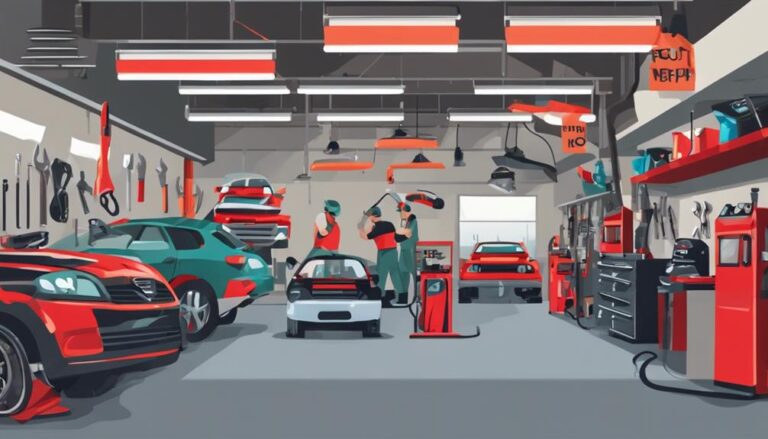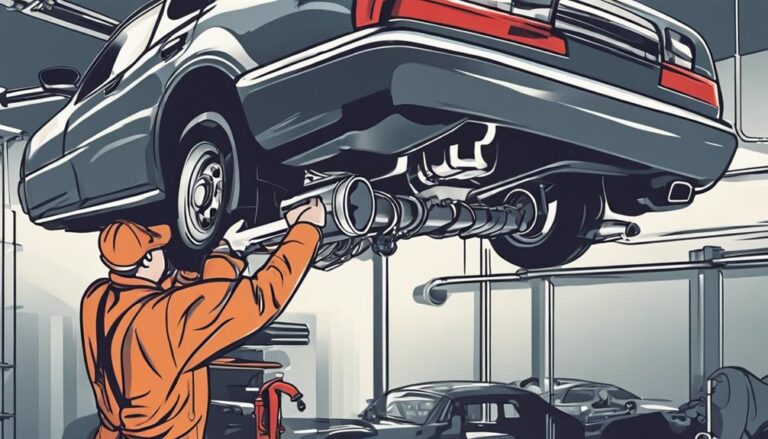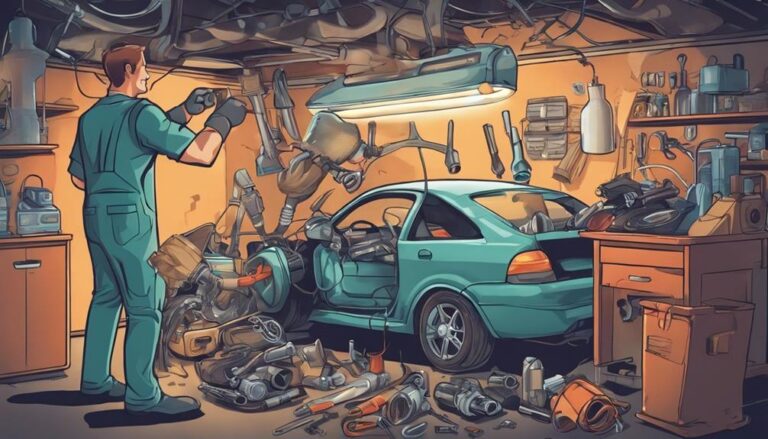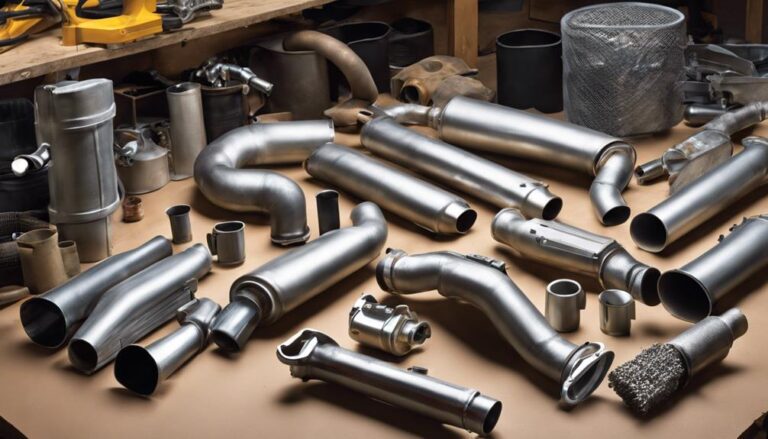3 Best Methods to Diagnose Exhaust System Issues
Did you know that faulty exhaust systems account for approximately 20% of all car breakdowns?
When it comes to diagnosing exhaust system issues, understanding the three best methods can save you time and money. By listening for peculiar sounds, conducting visual inspections, and using diagnostic tools, you can pinpoint problems efficiently.
But how exactly do these methods work, and what signs should you be on the lookout for to catch exhaust issues early? Let's explore the intricacies of each method to help you keep your vehicle running smoothly.
Key Takeaways
- Listen for unusual sounds and identify pitch variations for early detection.
- Conduct visual inspections to spot leaks, rust, or damage promptly.
- Utilize diagnostic tools for precise issue pinpointing and component testing.
- Seek professional consultation for complex problems and comprehensive care.
Listening for Unusual Exhaust Sounds
If you frequently monitor your vehicle's performance, listening attentively for any unusual exhaust sounds is a crucial step in identifying potential issues within the exhaust system. By honing in on the auditory cues your vehicle provides, you can swiftly detect abnormalities that may indicate underlying problems.
Start by recognizing pitch variations in the exhaust note; any deviation from the usual tone could point towards issues such as leaks or blockages. Pay close attention to rhythmic patterns in the exhaust sound during acceleration or idling; irregularities in these patterns might signify specific malfunctions that require immediate attention.
Being able to differentiate between normal exhaust sounds and new, abnormal noises is key to accurately diagnosing exhaust system issues. Sudden loud noises like hissing, popping, or rumbling should raise red flags and prompt further investigation. Remember, your ears can be powerful diagnostic tools when it comes to maintaining the health of your vehicle's exhaust system.
Visual Inspection for Leaks and Damage
When conducting a visual inspection for leaks and damage in your vehicle's exhaust system, carefully examine the exhaust pipes and muffler for signs of rust, corrosion, or holes. It's crucial to assess the condition of these components to ensure the proper functioning of your exhaust system. Here are some key points to consider during your inspection:
- Check for signs of rust, corrosion, or holes: Rust, corrosion, or holes in the exhaust pipes and muffler can indicate wear and potential leaks that need to be addressed promptly.
- Assess loose connections and brackets: Examine the connections, clamps, gaskets, and brackets for any looseness or damage that could lead to leaks in the exhaust system.
- Inspect for visible cracks, dents, or areas of wear: Look for any visible damage on the exhaust components that may compromise the system's efficiency and performance.
Utilizing Diagnostic Tools for Precision
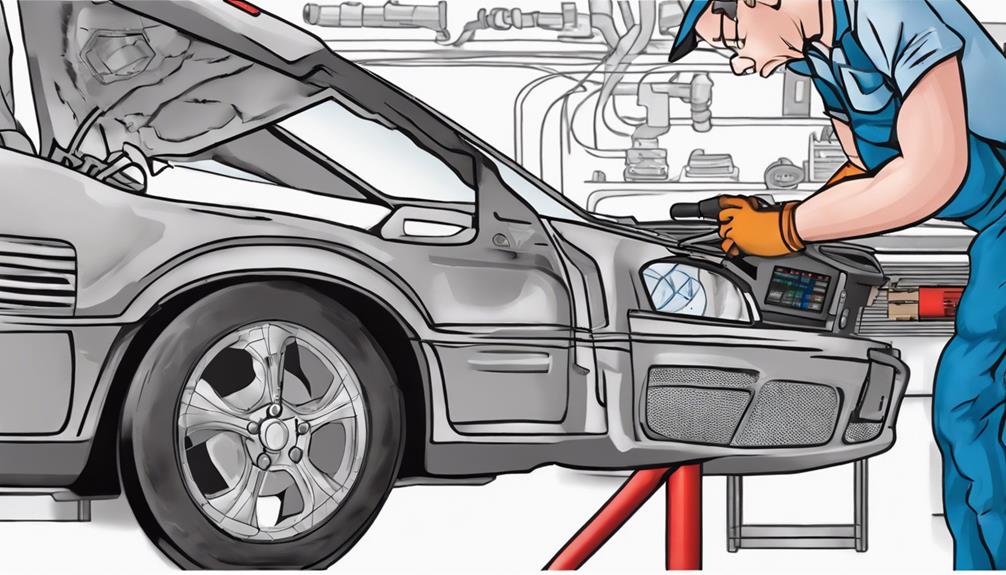
Utilizing diagnostic tools enhances precision in diagnosing exhaust system issues by providing real-time data and pinpointing the exact location of potential problems. Sensor data analysis plays a crucial role in identifying issues such as oxygen sensor malfunctions or catalytic converter inefficiencies. By utilizing diagnostic tools like OBD-II scanners, mechanics can interpret codes specific to the exhaust system, enabling a more accurate diagnosis.
Moreover, these tools offer the capability to conduct component testing, allowing for the evaluation of individual parts within the exhaust system. Through bi-directional tests, advanced diagnostic tools can verify the functionality of components like the EGR valve or the secondary air injection system. This thorough examination helps in determining the root cause of the problem promptly.
Professional mechanics heavily rely on diagnostic tools to streamline the diagnosis process and efficiently address exhaust system issues. The ability to access real-time data and perform targeted component testing significantly aids in resolving problems effectively.
Frequently Asked Questions
How Do You Diagnose Exhaust Problems?
To diagnose exhaust problems, listen for abnormal sounds and observe smoke. Check engine performance and fuel efficiency. Look for blockages and inspect the exhaust system for issues like cracks or damage. Visual inspection is crucial for accurate diagnosis.
How Do You Test an Exhaust System?
To test an exhaust system effectively, start with a vacuum gauge to check backpressure, visually inspect for damage, conduct a smoke test for leaks, listen with a stethoscope for abnormalities, and analyze emissions with a gas analyzer.
What Are the Two Best Methods of Diagnosing Exhaust System Leaks?
To detect exhaust system leaks effectively, start with a visual inspection for signs of damage. Next, perform a smoke test to pressurize the system and observe smoke escaping from leaks. These methods provide accurate diagnosis for efficient repairs.
What Are the Two Methods to Check for a Restricted Exhaust System?
To check for a restricted exhaust system, visually inspect for blockages and conduct a pressure test to measure any significant drops. You can also perform a smoke test to detect leaks and a flow test to ensure optimal exhaust system function.
Conclusion
In conclusion, utilizing a combination of visual inspection, listening for unusual sounds, and performance testing is crucial in diagnosing exhaust system issues accurately.
Some may argue that professional diagnostic tools aren't necessary, but they provide precise data that can pinpoint the exact problem for a more efficient repair process.
By incorporating all three methods, you can effectively identify and address any exhaust system issues promptly, ensuring optimal performance of your vehicle.

